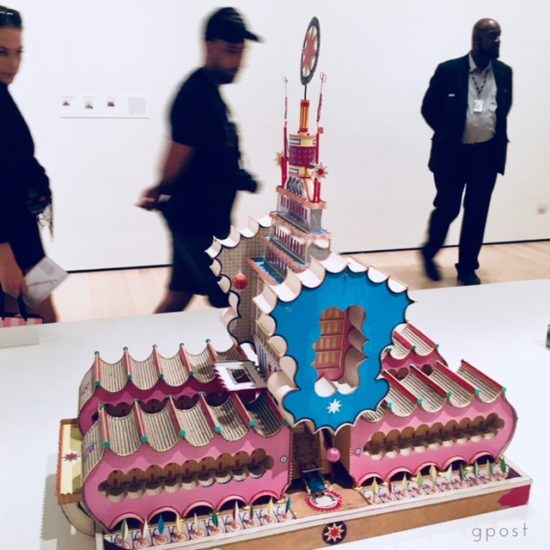
The toolbox we rely upon to make a living often enables the other work commitments that we take on. At the same time, these second and third jobs can reward and sustain us in ways that our first job never could.
You’ve already demonstrated a skill (or constellation of skills) for a paycheck. You’ve experienced pride in what you’ve produced and others have responded, perhaps better than you expected, to your contributions. You’ve actually gotten good at something and wondered: What if I take my game to a different field, or to a different sport entirely, and find out whether I can make a difference there too? It just might open up a brave new world.
If your co-workers or clients were asked today, what would they say makes you shine? Your speaking, organizing and responsiveness, your pitching in, rabble-rousing and getting to the bottom of things, your caring, crisis managing and advocating–or maybe it’s your way of combining all of them. They might even say that your peak performance makes room for them too, a place where they can gain their own spotlight, sense of accomplishment and gratitude when you’re working together.
Even as a kid, these talents have helped you succeed. So what if you brought them to a new challenge, with risks and opportunities that are at once similar and different from the ones you’re confronting today? It’s the small voice that asks whether “there’s even more to me than I’ve demonstrated already” and considers finding out. It’s your irritation or even anger at seeing others getting it wrong when you have the suspicion or audacity to think that you’d get it right. What energy and renewed sense of purpose might you find along the way?
When you’ve already been on both sides of this conversation, you know that some of the best stories come from what happens next.
It’s Having Enough Confidence to Act On Your Frustration
Jose Andres is a James Beard Award-winning chef and the owner of several highly successful restaurants. Andres grew up in Spain, near Valencia, and came to the U.S. after serving as a cook in the Spanish Navy. Among many other things, he is credited with bringing small plate tapas eating to America.
Andres’ father was always cooking for his family and often for their entire community. As a boy, Andres wanted to be more involved in the food preparation but his father always put him in charge of the fire. As he recounted in a Fresh Air interview this week: one day during meal preparation
I got very upset, and he sent me away. They finished the meal. But he came, and he pulled me aside, and he told me, my son, I know you wanted to do the cooking. But I had nobody else to do the fire, and actually the fire is the most important thing.
For Andres, it not only stoked his desire to cook but also taught him about the many essential jobs that add up to a wonderful meal. More than food preparation needs to come together to make the best out of what you have. As he grew up, taking on more of these jobs along with eating with his extended family or neighbors became the most (as he says) “natural” part of him, and Andres came to see places for eating “as the pumping hearts” that sustain communities.
In Washington D.C., where he opened his first restaurant and in subsequent ventures, Andres brought his most valuable skills with him, in particular, his ability to produce conistently wonderful meals despite each kitchen’s complex and ever-changing environment. In other words, he’d mastered the art of improvisation.
As chefs, restaurant people – we manage chaos very well… And what we are very good at is understanding the problem and adapting. And so a problem becomes an opportunity… We’re practical. We’re efficient. We can do it quicker, faster and better than anybody.
Why? Because every night there are people with very high hopes sitting in his dining rooms and waiting to be fed.
With energy and personality, Andres got very good at making the chaos work. But he was also drawn to hungry people in D.C and elsewhere who couldn’t afford his restaurants. Among others, he sought out Robert Eggers for advice. When Eggers opened the D.C. Central Kitchen in 1989, it was the country’s first “community kitchen” where food donated by hospitality businesses and farms became the basis for a culinary arts job-training program. It was also reminiscent of when Andres helped his family cook for their entire community back in Spain.
In his interview, Andres talks about how much he regretted not being one of the volunteers who joined the New Orleans relief effort after Hurricane Katrina in 2005 and how horrified he was about FEMA’s bungling. Among other things, he saw the Superdome as a giant feeding station for fans that should have been adapted for the thousands of displaced and hungry people who had huddled there. Five years later, Andres was ready to volunteer when an earthquake devastated Haiti. That was the day when he took on his second job.
I think the turning point for me was in Haiti when I arrived to Port-au-Prince a few weeks after the earthquake. And I began cooking there in different refugee camps. And I created World Central Kitchen…
[W]hat happens is that once you are on the field somewhere, and you know the landscape, and you know how a city or an island works, when a tragedy like this happens, you become very good at solving the problems.
He brought his skill at making chaos work to a devastated community, and he never looked back.
The Largest Restaurant in the World

When Hurricane Maria devastated Puerto Rico a year ago, Andres arrived the same day as the first government officials. As summarized in the Washington Post, Andres, along with the volunteers he brought with him and the locals he enlisted on the ground, jumped into the maelstrom and went to work.
Andrés and the thousands of volunteers who composed Chefs for Puerto Rico remained for months, preparing and delivering more than 3 million meals to every part of the island. They didn’t wait for permission from FEMA. They didn’t even wait for FEMA funding (though funding eventually came from the agency). They just started activating restaurants, churches, food trucks and, eventually, the Coliseo de Puerto Rico in San Juan. They quickly scaled up their production of sandwiches, paellas, stews and, really, anything that would provide more comfort than the field rations known as Meals Ready to Eat, or MREs, the food often passed out after disasters.
As Andres explains in “We Fed An Island,” which was published this week: “I like to say that a hot meal is more than just food, It’s a plate of hope [while] an MRE is almost hopeless.” He provided additional observations about his months in Puerto Rico in his Fresh Air interview on Monday.
Andres’ “first relief kitchen” on the island was secured through a chef friend of his in San Juan. Shortly thereafter he began to serve doctors and nurses in the hospitals because no one else was feeding them and they were working around the clock. Of course, it was impossible to escape the realization that the entire island was hungry. As he explained in his own brand of English:
It was plenty of food in Puerto Rico. The private sector makes sure of that. What we had to do is organize a logical system to start activating kitchens that will have generators, that will have refrigeration, that will have gas, that will have people to work, preparing those foods. So we had to adapt.
For example, sandwiches are important because you can make them quick. You can make many. You can use all the volunteers that want to help their fellow citizens. So what do we do? We bring bread from the mainland in a moment that the airport is in chaos, and the ports are collapsed? Or do we identify the bread factories who are amazing, and you help them with diesel and fuel to go back up? That’s what we did. We partnered with local bakeries to make sure that those bakeries will be functioning sooner rather than later. We began getting bread. We began getting every single ham and cheese we could get our hands on – mayo. We began making sandwiches day one.
So what else we had? We had rice, yes. We had chicken, yes. Let’s start making rice and chicken. This is something Puerto Ricans love. It’s easy to transport, gets hot very quickly. You can transport for an hour, and the food is going to arrive hot. This is the kinds of things chefs do. We adapt. So in Puerto Rico, we began getting our hands in anything we could get. And we began cooking.
After Maria, his people prepared more meals for Puerto Rico than the Red Cross. At one point, he had 18 kitchens functioning at the same time producing 150,000 meals a day. In the early fall of 2017, he was running the largest restaurant in the world.
 The book cover for “We Fed An Island” shows Andres holding a huge spatula and looking like he’s cooking. During his interview, he admitted that he didn’t do much cooking in Puerto Rico because his ability to manage the ever-changing demands was far more critical, “So, yes, my team probably is joking on these photos, saying, OK, the only time you would really cook [is when your picture is being taken].” Instead, his abilities enabled others to lead once he had gathered the raw materials and secured the facilities where they could do so. (“I became the leader, “ he said. “But actually, we had 25,000 leaders.”) As he later wrote:
The book cover for “We Fed An Island” shows Andres holding a huge spatula and looking like he’s cooking. During his interview, he admitted that he didn’t do much cooking in Puerto Rico because his ability to manage the ever-changing demands was far more critical, “So, yes, my team probably is joking on these photos, saying, OK, the only time you would really cook [is when your picture is being taken].” Instead, his abilities enabled others to lead once he had gathered the raw materials and secured the facilities where they could do so. (“I became the leader, “ he said. “But actually, we had 25,000 leaders.”) As he later wrote:
What we did was embrace complexity every single second. Not planning, not meeting, just improvising. The old school wants you to plan, but we needed to feed the people.
That observation highlights Andres’ mission for World Central Kitchen going forward: to fill a gapping hole in the emergency relief efforts that he witnessed first hand in Haiti and Puerto Rico. Top-down, paramilitary style disaster initiatives are plainly ineffective. What’s needed instead are organizations in specialized areas like providing food, medicine or shelter that “embrace the chaos” that is inherent to crisis, including enabling those who are most affected to use whatever’s available, including idle restaurants, schools and stadiums. He wants World Central Kitchen to be, as he calls it, “a first food responder” in future disasters. As for him personally, there is no question that the most satisfying times to lead are “in the moments of darkness.”
Andres’ personality bubbles out of him, as do his stories and observations, which partly explains his need for an additional job; his first one wasn’t big enough to contain him. But there was another reason too. A need in him to feed his entire community simply couldn’t be met by serving up five-star fare.
This link to the Washington Post story includes a 9-minute video of Andres discussing his months in Puerto Rico and how “even thinking about” running for political office can heighten the sense of responsibility you feel for the welfare of your fellow citizens. It’s funny, visceral and subversive. His Fresh Air interview is a gem too, including how his reinvention of the famous Phllly cheesesteak will change your life forever.
Food Is As Local As It Gets
There’s an Episcopal church less than a mile from me that, through changing demographics, now finds itself in a struggling neighborhood. It’s called St. James the Less, and today most of its notoriety comes from its school, which goes through the middle school grades and is free to boys and girls in Philadelphia’s Hunting Park community.
One of th City’s highest-end food purveyors, Di Bruno Brothers, recently celebrated its 75thyear in operation with a founding gift of $75,000 to launch what’s called the Neighborhood Kitchen at the St James School. With the Kitchen at the School, students gain “a sense of food security because their lunch is right there behind them.” They learn to set the tables, multi-tasking during set up and clean up, and how to have an interesting conversation while eating family style. As the kids describe in a clip about the initiative, lunch is their “favorite time of day.” I enjoyed some of the food (including jerk chicken and rice) recently and understand why everyone over there looks forward to lunchtime every day.
In addition to the Kitchen experience, the students also have an educational one, care of one of the City’s leading chefs and restaurant owners, Marc Vetri. Through what he calls the Eatiquette Community Partnership, he provides St. James and other City schools with a program of “hands-on nutrition education” that emphasizes “the use of whole foods and whole ingredients” including fruit and vegetables, and how to serve them in delicious ways.
The St James School has 10 to 11 hours of programming each weekday and two Saturdays a month. Its school year extends through the end of July. Some of the 63 students live at the School. Given its small size and high level of backing by funders and the Church’s congregation, it has become a refuge for those who are fortunate enough to attend and an oasis in a mostly troubled education system. (Philadelphia has the highest poverty rate among the country’s ten largest cities.) But like Jose Andres, its backers have stepped into a disaster in their community and have been improvising solutions that are making a difference now, with the hope that they can be replicated later in all of the other neighborhoods that need them.
Like Andres, those with second jobs at the St. James School have paying jobs too. The Di Bruno Brothers and Marc Vetri are using their food and restaurant skills to improvise solutions related to health and nutrition that were lacking until they came along. In the process they’re not just serving their well-healed customers but also an under-served part of their entire community.
They are doing jobs that enrich one another. They are seizing work-related opportunities that exist almost everywhere.
Have you applied, re-purposed or even reinvigorated your skills in a second job? If so, it would be great to hear more about it.
This post was adapted from my September 16, 2018 Newsletter.









